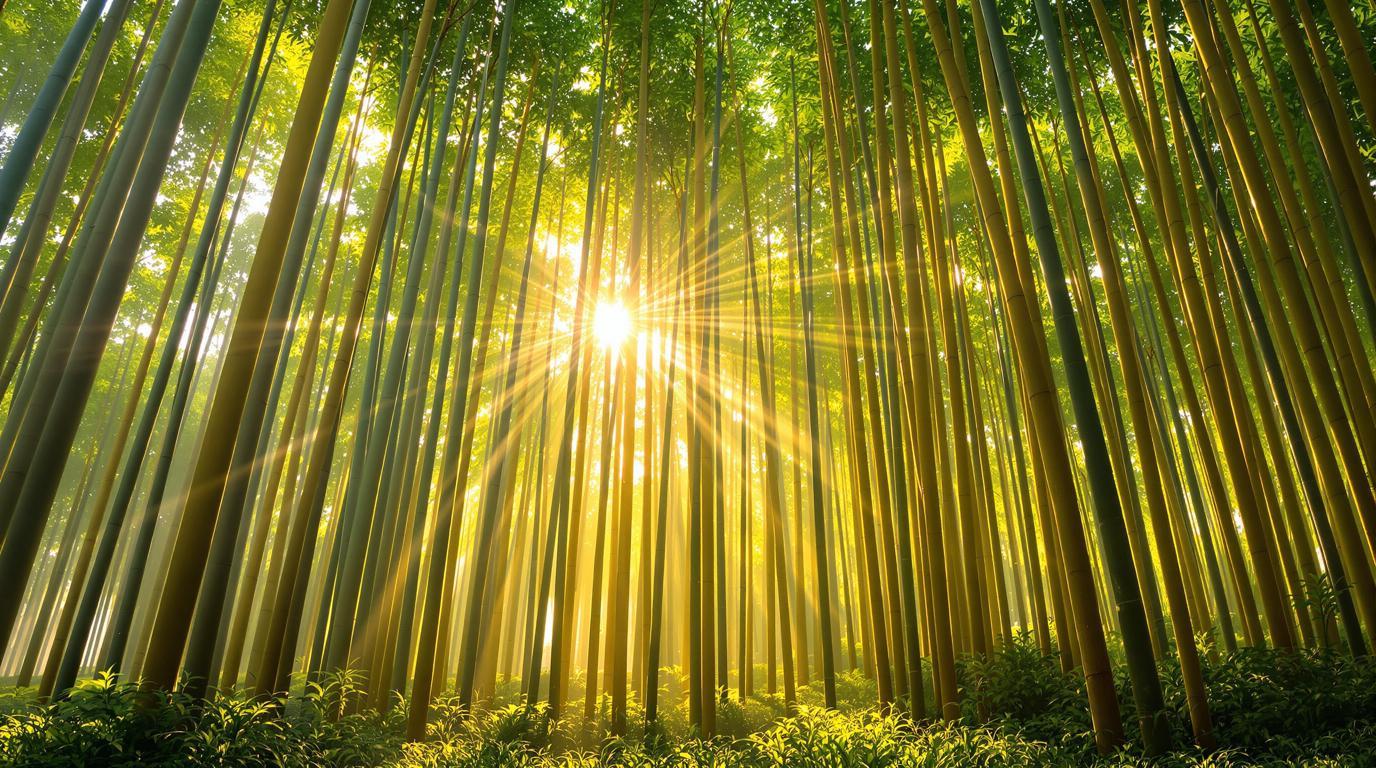The first time I wandered beneath sixty-foot bamboo giants in southern France, I stopped in my tracks, sweat beading on my forehead in the June heat. Only the breeze moving through the towering stalks betrayed my actual location—not in a remote Asian forest, but in an extraordinary botanical sanctuary nestled among the limestone hills of Occitanie. The whistling sound above me was almost musical, like nature’s own wind chimes performing a private concert.
Where jungle meets Mediterranean in France’s hidden bamboo paradise
Just outside the pottery town of Anduze lies La Bambouseraie, a 12-hectare botanical wonderland created in 1856 by spice trader Eugène Mazel. His exotic garden experiment transformed a slice of French countryside into one of Europe’s most extraordinary plant collections. After nearly failing during financial hardship, the garden was rescued by the Nègre family in 1902, who continue to nurture this living treasure today.
“We don’t just grow plants here—we preserve stories,” explains head gardener Marie Lefèvre, her hands stained with soil as she tends to a rare Chinese species. “Each bamboo carries the memory of explorers who risked everything to bring these specimens across oceans.”
Unlike France’s formal, manicured gardens, this wild sanctuary feels deliberately untamed, creating unexpected moments of discovery around every curve of its shaded paths.
Three extraordinary worlds hidden within one garden
A Laotian village suspended in time
Stepping into the Vallon du Dragon (Dragon Valley) feels like teleporting across continents. Here, authentic Laotian structures built from hand-split bamboo rise from mist-covered ponds, their peaked roofs catching morning light. Unlike manufactured tourist attractions, these buildings employ traditional Asian construction techniques, with not a single nail used throughout.
I watch a family peer through the windows of the village chief’s hut, their children wide-eyed at discovering hidden historical spaces within this living museum. The juxtaposition of French voices against this Southeast Asian backdrop creates a dreamlike quality that defines the entire garden experience.
The sequoia cathedral where giants whisper
Beyond the bamboo forest lies a hushed grove of sequoias planted in 1861, their massive trunks now reaching over 40 meters skyward. Unlike California’s crowded redwood parks, here you might find yourself completely alone beneath these giants, with only filtered sunlight breaking through the canopy.
A wooden bench positioned perfectly at the grove’s center invites contemplation. I sit, noticing how the temperature drops significantly beneath these ancient sentinels, creating a natural air conditioning that offers blessed relief from summer heat.
Tasting bamboo’s unexpected culinary treasures
At the garden’s unpretentious Bambousnack café, Chef Laurent transforms fresh bamboo shoots into delicate spring rolls with a distinctly French accent—local chèvre and herbs replace traditional Asian fillings. “We harvest the shoots at dawn when they’re sweetest,” he explains, slicing paper-thin vegetables with practiced precision.
For the truly adventurous, try the bamboo-infused sorbet, its subtle grassiness balanced with local honey. After lunch, wander to nearby Anduze to explore its famous pottery workshops or discover France’s spectacular limestone canyons just a short drive away.
Essential insider wisdom for the mindful explorer
Timing your bamboo immersion
Arrive before 10am to experience the garden’s magical morning tranquility when dew still clings to leaves and birds perform their dawn chorus. The Japanese pavilion, often crowded midday, becomes a peaceful meditation spot in early hours.
Visit in late May to witness new bamboo shoots erupting from the earth at astonishing speeds—some varieties grow up to 90cm in a single day.
Practical pathways
While most visitors follow the main circuit, slip onto the less-traveled Chemin des Amoureux (Lovers’ Path) that winds through experimental bamboo varieties and offers glimpses of hidden cascades and water features.
The Cévennes steam train stops directly at the garden’s dedicated station during summer months, offering a romantic arrival option that eliminates parking concerns.
Borrowed landscapes and borrowed time
As afternoon shadows lengthen across the Japanese-inspired rock garden, I’m struck by how this place exists outside normal time—simultaneously honoring botanical history while creating living beauty that will outlast us all. In a world of quick tourist experiences, La Bambouseraie invites us to slow down and recognize that the most meaningful journeys happen at the unhurried pace of growing things.
